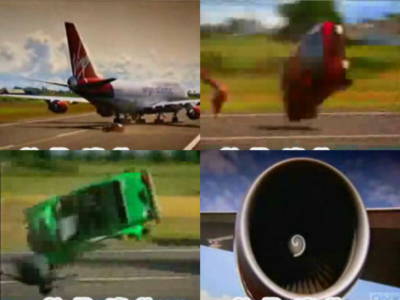Why does not the mosquito die even if it is struck by the rain?

For mosquitoes raindrops are objects that are up to 50 times bigger than their bodies and beaten by rain is equivalent to a shock that is hit by a large bus if it is a human being. So why do mosquitoes do not die even under the condition that "buses come down one after another" by American researchers in the experiment.
Mosquitoes survive raindrop collisions by virtue of their low mass
http://www.pnas.org/content/109/25/9822.abstract
Raindrops Keep Falling on My Head: A Mosquito's Lament - Phenomena: Curiously Krulwich
http://phenomena.nationalgeographic.com/2015/06/24/raindrops-keep-falling-on-my-head-a-mosquitos-lament/
When mosquitoes fly in the rain, there is a possibility of hitting raindrops at a rate of once every 25 seconds. The situation that 50 times the raindrops of your own volume hit at 9 meters per second (32.4 kilometers per hour) is equivalent to being hit by a large bus, so if you put yourself in it for a few minutes It is a common danger to rain that it is dead to.

Responding to the simple question "Why mosquitoes do not die in the rain?", Research teams such as Professor David Fu of the Georgia Institute of Technology in the United States used a high-speed camera that can shoot at 4000 - 6000 frames per second , We investigated the mechanism of mosquito survival by observing the behavior of mosquitoes in the reproduction of rain.

The research results of Dr. Fu are summarized in the following movie.
Mosquitoes also can fly in the rain - YouTube
Why can mosquitoes fly in the rain?

For mosquitoes raindrops are huge and dangerous at speed.

However, insects have fine hair on their feathers and have a body with a property of repelling water (hydrophobic).
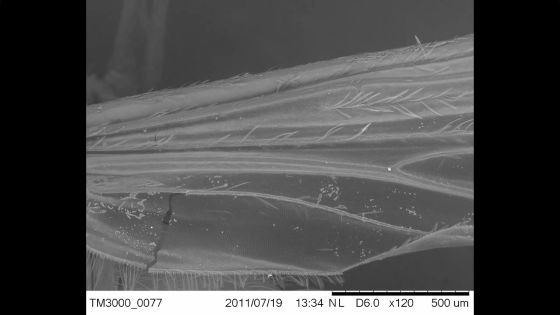
Because of this, even if the water strikes directly, it will be repelled without clinging.
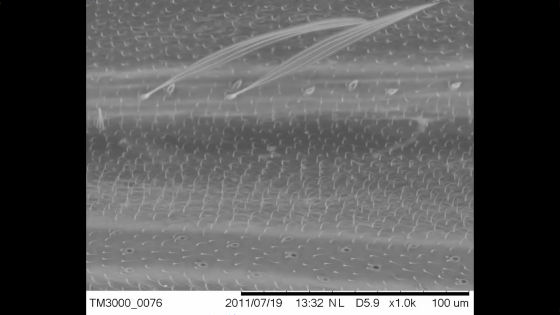
If it is a low speed water drop ...

Waterdrops are simply blown off.

There are two types of collisions in the rain.
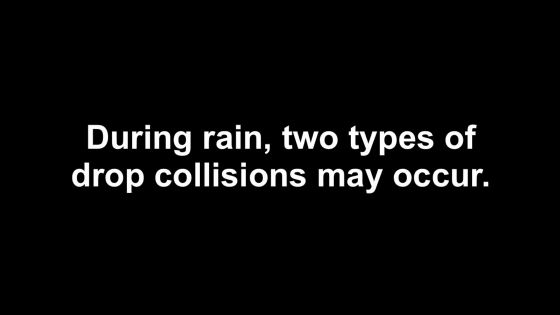
One is a type of collision in which insects rotate when a water droplet strikes.
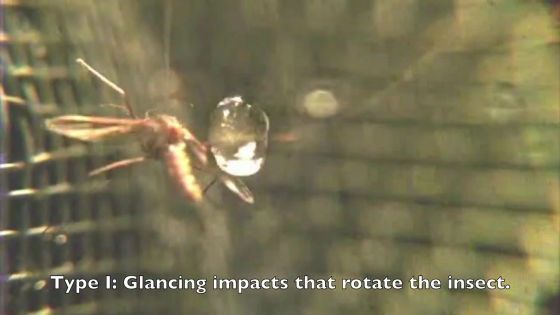
Another type is a type of collision that causes insects to fall downwards.
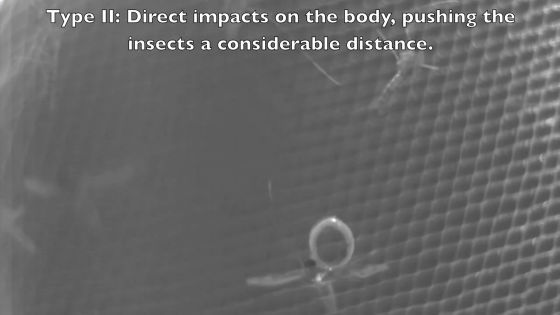
Despite any type of collision, mosquitoes can quickly regain their state and continue flying.
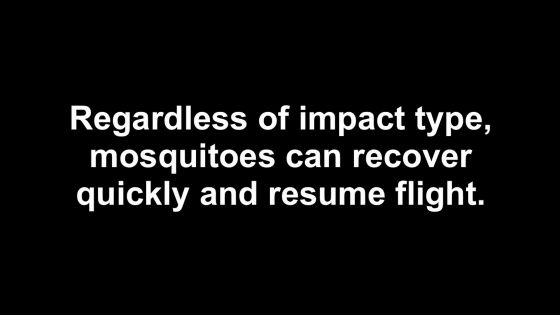
Mosquitoes are confined in a narrow space and water droplets are dropped to reproduce the inside of the rain. I tried photographing the situation with a high-speed camera.
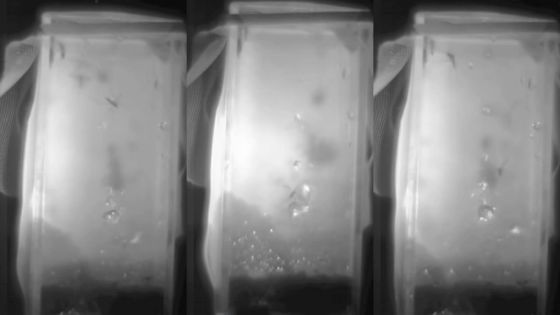
The question is, what is the impact of the collision in the air?
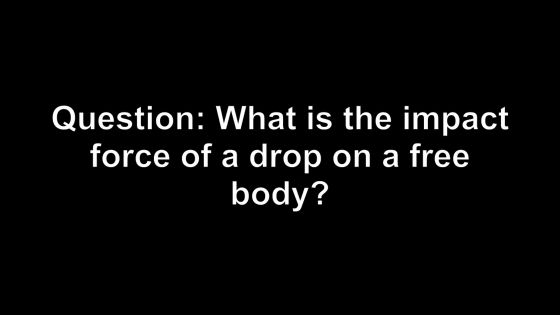
In the case of wing feathers ......
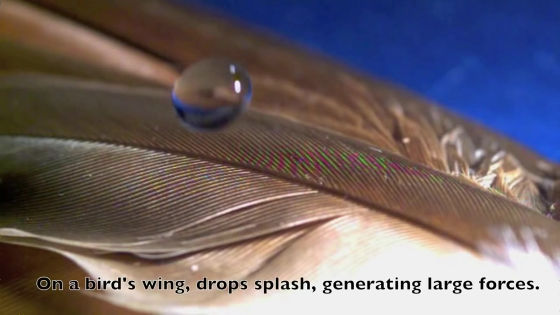
Rain particles will be scattered by impact.
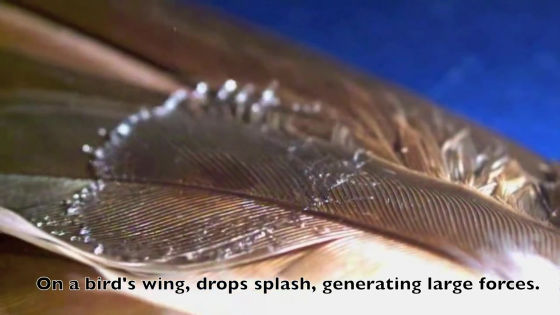
However, in the case of a light weight mosquito, momentum is hardly transmitted by impact.
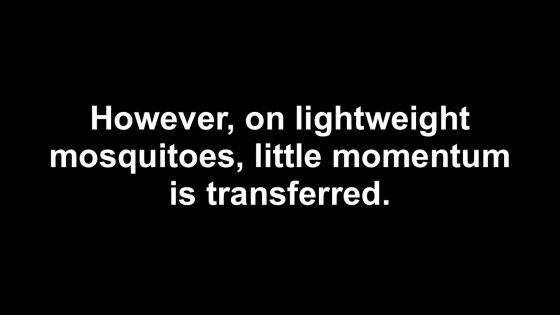
In order to reproduce the impact of a mosquito, when an experiment to hit a water droplet with a very light styrofoam as a mosquito is carried out ......
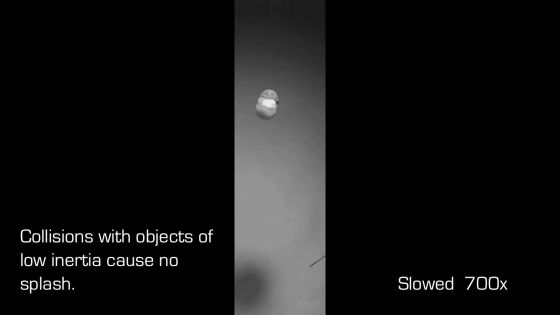
Due to the small change in momentum, water droplets did not scatter.
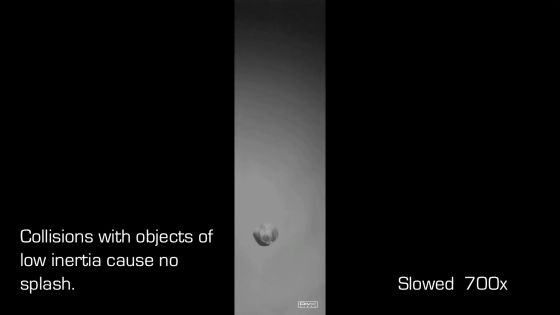
This is a simple model to calculate the speed change at the time of collision. When the mosquito mass (m 2) is too small with respect to the mass (m 1) of the water droplet, the speed change in a state of being integrated after collision should be negligible level.
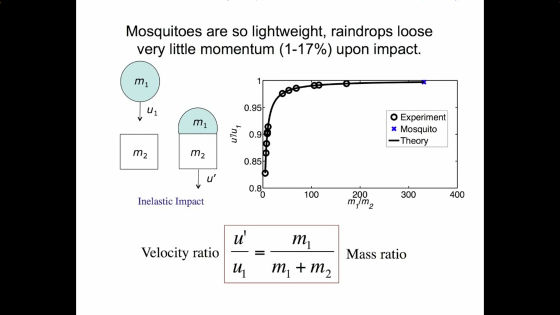
When you are in contact with a very light object, no great force will be transmitted and the water drop will not be deformed.
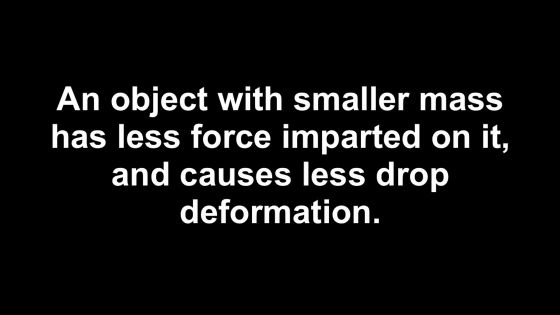
And since insects including mosquitoes have an exoskeleton, their body does not deform by collision of water droplets and escapes from the water droplets in a short time of tens of milliseconds.
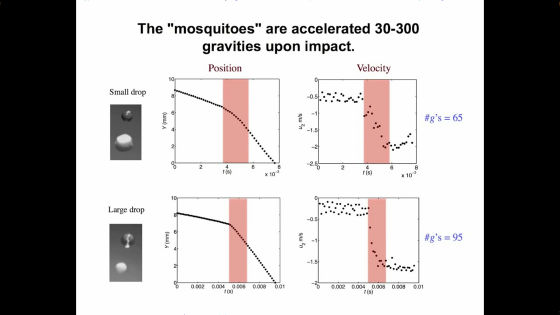
Mosquitoes can fly even in the rain by shaking water drops in a short time without receiving a large momentum change.
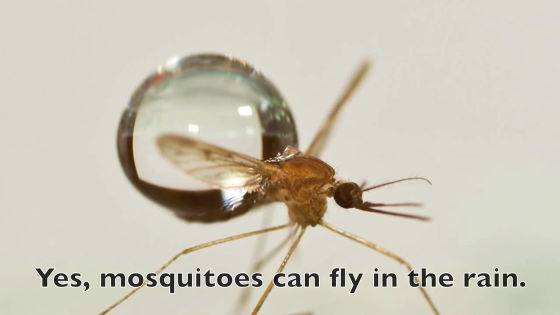
Related Posts:





